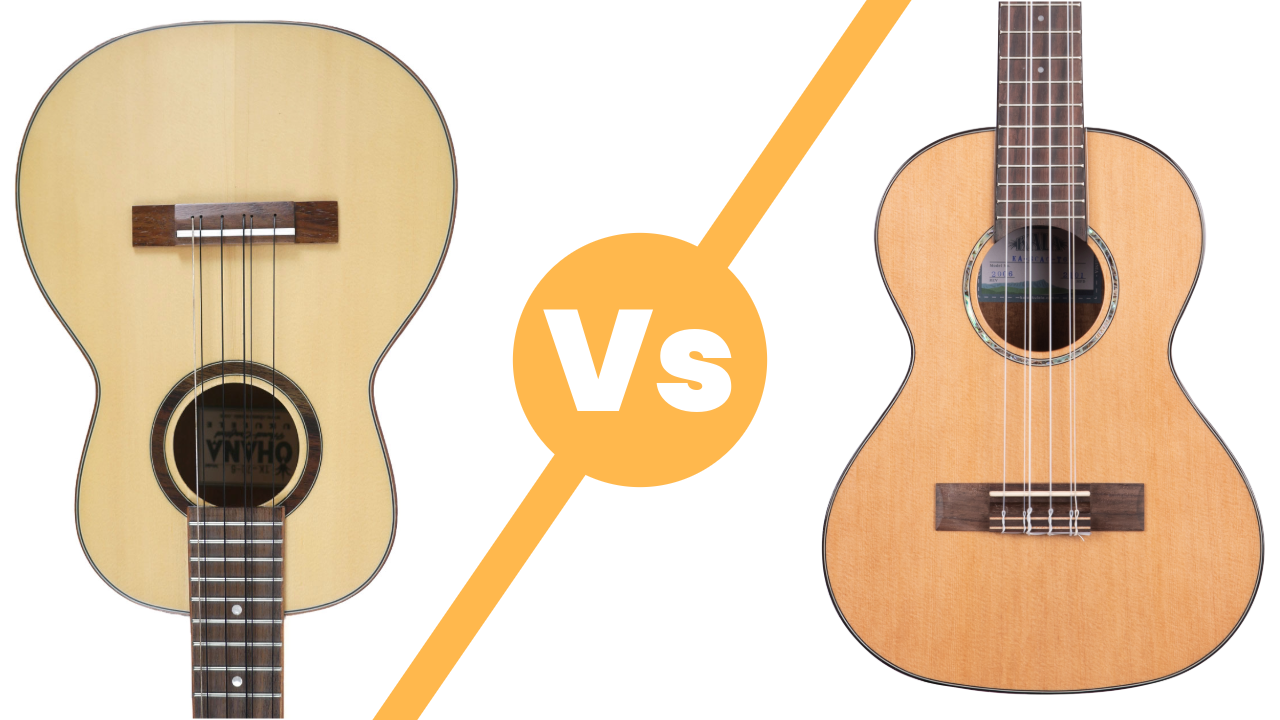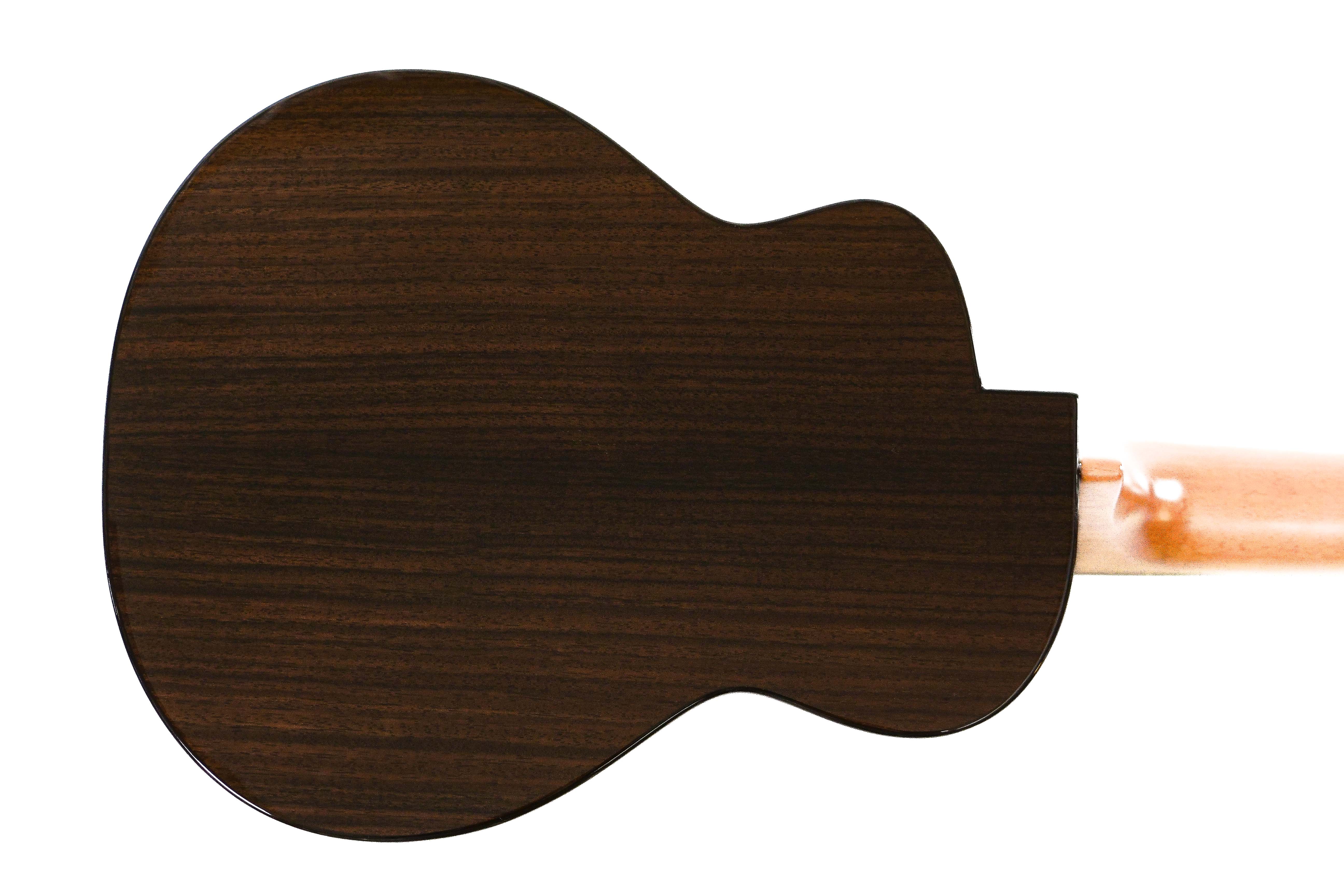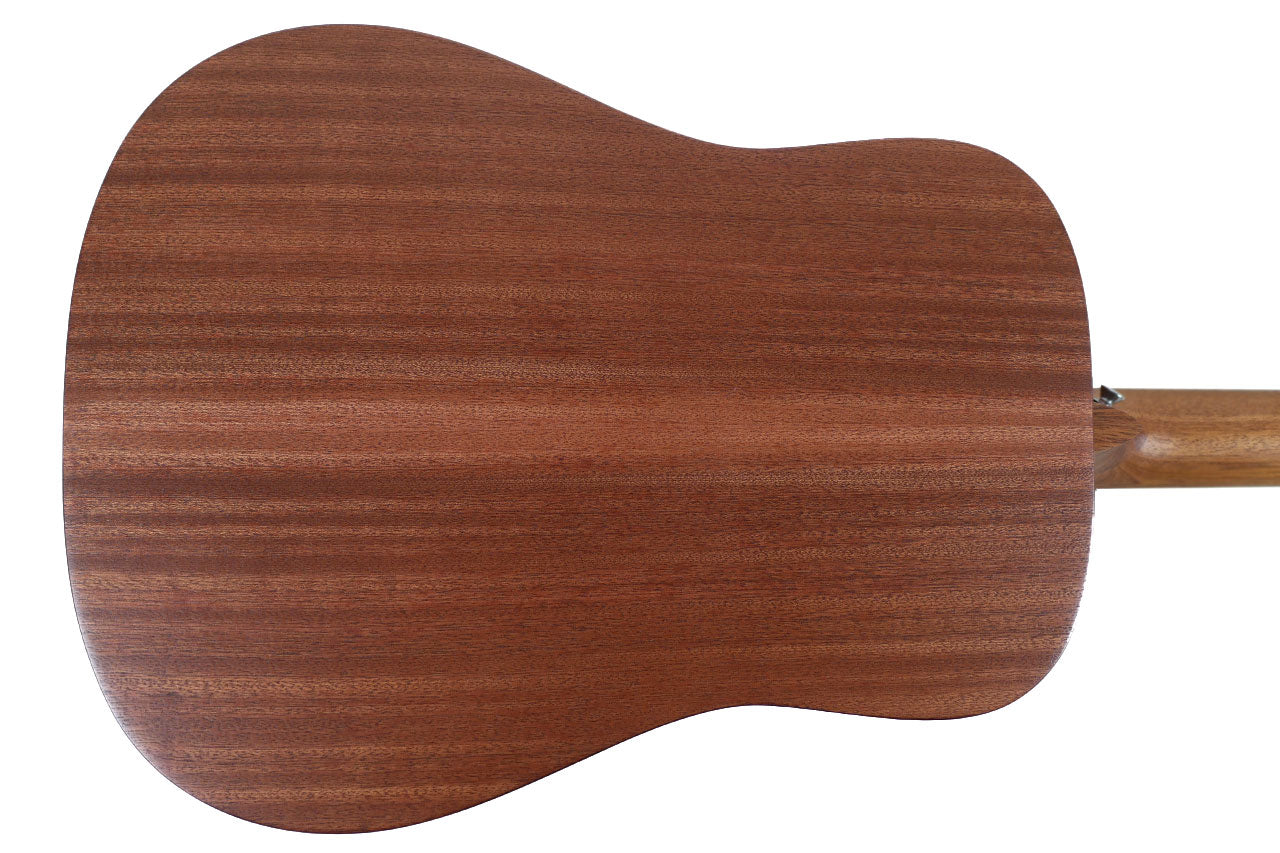Comparing Two Six-String Tenor Ukuleles: Ohana TK-70-6 vs Kala SCAC-T6
If you're exploring six-string tenor ukuleles—not guitarleles—two standout choices are the Ohana TK-70-6 and the Kala SCAC-T6. Although they may appear similar at first glance, each brings something unique to the table. Let’s break them down.
Spotlight on the Ohana TK-70-6
The Ohana TK-70-6 features all solid wood construction, starting with a solid spruce top and solid mahogany back and sides. This combination gives it a bright and crisp tone, often favored for clarity and projection.
Build and Aesthetic Details of the Ohana
A satin finish covers the body and solid mahogany neck, giving it a smooth, natural look and feel. The slotted headstock with geared tuners and double hardwood binding adds both functionality and elegance to this instrument.
Ohana’s Playability and Materials
With a 17-inch scale length and 1.5-inch nut width, the TK-70-6 suits players seeking comfort and versatility. Though the fretboard and bridge are labeled as “hardwood,” this often varies depending on availability, which is common in many ukuleles.
Unique Tuning of the TK-70-6
Both models share a distinctive tuning: high G, C (unwound), low C, E, A, and a wound low G. This gives the ukulele a fuller, guitar-like resonance without losing its ukulele charm. The TK-70-6 typically comes strung with black nylon strings.
Transitioning to the Kala SCAC-T6
Moving to the Kala SCAC-T6, there are notable contrasts. For starters, this uke boasts a solid cedar top, known for a warmer, richer mid-range tone compared to spruce. This tonal difference becomes more apparent with fingerstyle playing.
Construction and Finish of the Kala
While the top is solid, the back and sides are laminated acacia, offering durability without sacrificing too much sound quality. Unlike the Ohana’s satin finish, the Kala features a gloss finish, enhancing both looks and resonance.
Kala’s Comfort and Materials
The SCAC-T6 matches the Ohana in scale length and nut width but uses a rosewood fretboard and bridge, offering a familiar touch under the fingers. Its black geared tuners and polished headstock give it a modern appeal.
Shared Tuning, Different Strings
Though the tuning is identical to the Ohana, Kala equips this model with Aquila strings, contributing to a slightly different tonal response. It's worth noting that strings are easily changeable, making this a minor, though noticeable, detail.
Key Feature Comparison
- Top Wood: Ohana (Solid Spruce) / Kala (Solid Cedar)
- Back & Sides: Ohana (Solid Mahogany) / Kala (Laminate Acacia)
- Finish: Ohana (Satin) / Kala (Gloss)
- Fretboard: Ohana (Hardwood) / Kala (Rosewood)
- Strings: Ohana (Black Nylon) / Kala (Aquila)
- Tuning: Both – high G, C (unwound), low C, E, A, low G (wound)
What’s the Playing Experience Like?
Despite having six strings, both ukuleles maintain standard chord shapes. This makes transitioning from a four-string uke easy. The added strings simply enhance the depth, great for strumming and fingerpicking alike.
Final Thoughts
While both ukuleles offer rich tone and strong craftsmanship, the Ohana TK-70-6 may appeal more to those preferring an all-solid build, whereas the Kala SCAC-T6 suits those who love a warmer sound and glossier look. Either way, both are excellent entry points into the six-string tenor world.
Get the Ohana TK-70-6 6 String Solid Spruce & Mahogany Tenor Ukulele HERE
Get the Kala SCAC-T6 6-String Solid Cedar Top Tenor Ukulele HERE
Master the Ukulele at Uke Like The Pros
Master the Guitar at Rock Like The Pros













